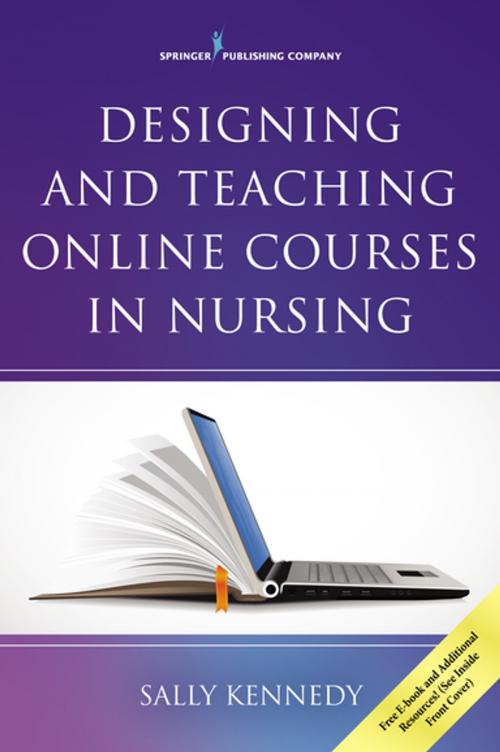Designing and Teaching Online Courses in Nursing
Nonfiction, Health & Well Being, Medical, Nursing, Issues, Research & Theory| Author: | Dr. Sally Kennedy, PhD, APRN, FNP, CNE | ISBN: | 9780826134097 |
| Publisher: | Springer Publishing Company | Publication: | June 28, 2017 |
| Imprint: | Springer Publishing Company | Language: | English |
| Author: | Dr. Sally Kennedy, PhD, APRN, FNP, CNE |
| ISBN: | 9780826134097 |
| Publisher: | Springer Publishing Company |
| Publication: | June 28, 2017 |
| Imprint: | Springer Publishing Company |
| Language: | English |
Despite astronomical growth in the number of online nursing programs currently available, little support is provided for faculty on how to teach in that environment. While most assume that the knowledge and skills required for classroom teaching are readily translatable to teaching online, significant differences exist. Affordances provided by the online environment promote reflection and engaging with the content in a deep and meaningful way that factors in adult students’ strengths as self-directed, motivated, and goal-driven learners. This resource provides step-by-step instructions for RN-BSN, masters, DNP, and PhD faculty on how to teach online effectively, engage their students, and foster success for both student and teacher.
Teaching Online Courses in Nursing offers practical information on every aspect of teaching an online course. Foundational educational theories and concepts including new insights from cognitive psychology are explained and linked in such a way that operationalizing them during course design makes good sense. The core sections of the text focus on online course design that includes drafting course objectives and a syllabus and crafting discussion questions or cases. Key to teaching an online course is understanding and being comfortable with facilitation strategies in order to maintain a balance between being present in the course and not getting in the way of learning. Worksheets with guiding questions, discussion tracking tools, and other instructor resources will assist readers in developing the best approach for designing and teaching a specific online course.
Key Features:
- Worksheets to guide each step of the process of designing and teaching a course online
- Includes best practices in online education and the latest research
- Features the outcomes-based approach of Wiggins and McTighe (2005), re-conceptualized for online course development
- Take-Away summaries at the end of each chapter sum up the key points
Despite astronomical growth in the number of online nursing programs currently available, little support is provided for faculty on how to teach in that environment. While most assume that the knowledge and skills required for classroom teaching are readily translatable to teaching online, significant differences exist. Affordances provided by the online environment promote reflection and engaging with the content in a deep and meaningful way that factors in adult students’ strengths as self-directed, motivated, and goal-driven learners. This resource provides step-by-step instructions for RN-BSN, masters, DNP, and PhD faculty on how to teach online effectively, engage their students, and foster success for both student and teacher.
Teaching Online Courses in Nursing offers practical information on every aspect of teaching an online course. Foundational educational theories and concepts including new insights from cognitive psychology are explained and linked in such a way that operationalizing them during course design makes good sense. The core sections of the text focus on online course design that includes drafting course objectives and a syllabus and crafting discussion questions or cases. Key to teaching an online course is understanding and being comfortable with facilitation strategies in order to maintain a balance between being present in the course and not getting in the way of learning. Worksheets with guiding questions, discussion tracking tools, and other instructor resources will assist readers in developing the best approach for designing and teaching a specific online course.
Key Features:
- Worksheets to guide each step of the process of designing and teaching a course online
- Includes best practices in online education and the latest research
- Features the outcomes-based approach of Wiggins and McTighe (2005), re-conceptualized for online course development
- Take-Away summaries at the end of each chapter sum up the key points















